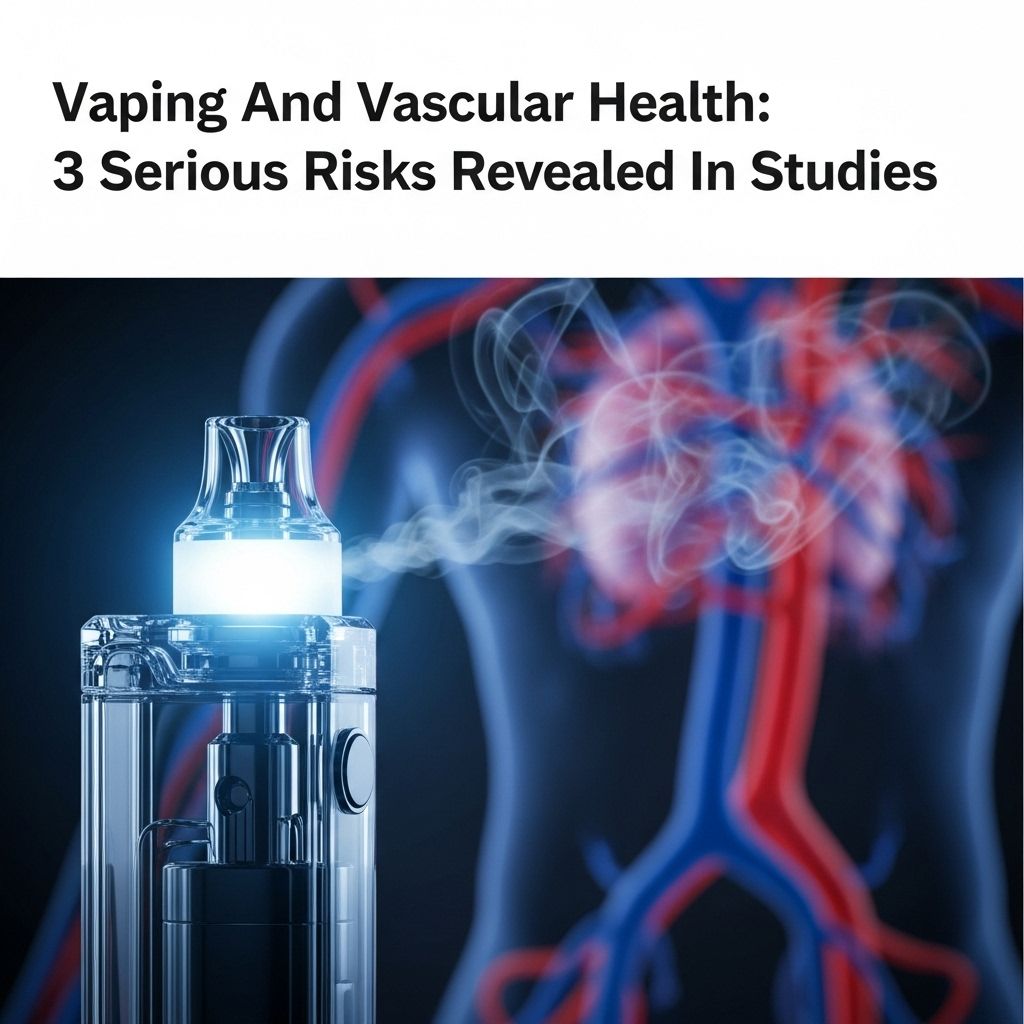Vaping’s Impact on Facial Microcirculation
Nicotine-laden vapor can impair blood vessel function and reduce skin oxygen supply.

Table of Content
- Introduction
- Vaping and Vascular Health
- Microcirculation and Vaping
- Nicotine and Vascular Function
- Research Findings on Vaping
- Conclusion
- Frequently Asked Questions (FAQs)
Introduction
Vaping, or the use of electronic cigarettes (e-cigarettes), has become increasingly popular worldwide. Despite its growing popularity, there is mounting evidence that vaping can have several adverse health effects, particularly on vascular health and microcirculation. Microcirculation refers to the network of tiny blood vessels in the body, essential for delivering oxygen and nutrients to tissues. This article delves into the research findings on how vaping affects facial microcirculation and vascular health.
Vaping and Vascular Health
Vascular health is crucial as it underpins the body’s ability to maintain healthy blood flow and prevent cardiovascular diseases. Traditional tobacco smoking is well-known for causing vascular dysfunction, but e-cigarettes have also been linked to similar adverse effects. Studies indicate that regular vaping can lead to premature vascular dysfunction, affecting both micro and macrovascular health over time.
Microcirculation and Vaping
Microcirculation is pivotal for maintaining healthy skin and organs. While there is limited research specifically focusing on facial microcirculation, studies on microcirculation in general suggest that vaping can impair microvascular function. This impairment can lead to reduced blood flow and oxygen delivery to tissues, potentially affecting skin health and overall well-being.
Nicotine and Vascular Function
Nicotine, a common ingredient in many e-liquids, is known to have significant effects on vascular function. It can increase platelet aggregation and reduce vasodilation, leading to decreased blood flow and increased risk of thrombosis. Nicotine’s impact on vascular health is a critical factor in understanding how vaping affects microcirculation.
Key Effects of Nicotine on Vascular Function:
- Platelet Aggregation: Nicotine can increase platelet activity, leading to the formation of blood clots and thrombi.
- Vasodilation Reduction: It reduces the ability of blood vessels to dilate, which can impair blood flow and oxygen delivery.
Research Findings on Vaping
Recent studies have provided insightful findings on how vaping impacts vascular and microcirculatory health:
Impact on Thrombosis and Microvascular Function:
A study found that using e-cigarettes with nicotine increases platelet and fibrin-dependent thrombus formation after just 30 puffs. This indicates a significant risk of vascular complications even with brief exposure to nicotine-containing vape products. Additionally, microvascular function, particularly endothelium-independent vasodilation, was impaired in individuals exposed to nicotine-containing e-cigarettes compared to non-nicotine versions.
Effects on Nasal Mucociliary Clearance:
Another study highlighted that vaping, similar to traditional smoking, impairs nasal mucociliary clearance. This impairment can weaken respiratory defenses and increase the risk of respiratory infections.
Premature Vascular Dysfunction in Young Adults:
Regular e-cigarette users, especially those who have used them for more than three years, exhibit premature micro and macrovascular dysfunction. This suggests that prolonged vaping can lead to systemic vascular problems, potentially increasing the risk of cardiovascular disease.
Conclusion
While vaping was initially thought to be a safer alternative to traditional smoking, emerging research indicates that it poses significant health risks, particularly to vascular health and microcirculation. Nicotine plays a crucial role in these effects, impacting both platelet activity and vasodilation. As more evidence comes to light, understanding the full scope of vaping’s impact on health is crucial for informing public health policies and advising individuals on the potential risks associated with vaping.
Frequently Asked Questions (FAQs)
Q: How does vaping affect facial microcirculation?
A: Vaping can potentially impair facial microcirculation by affecting the overall microvascular health, similar to its effects on other parts of the body.
Q: What are the key risks associated with vaping and vascular health?
A: Key risks include increased thrombosis formation, impaired vasodilation, and premature vascular dysfunction, which can lead to cardiovascular complications.
Q: How does nicotine in e-cigarettes impact vascular health?
A: Nicotine in e-cigarettes can increase platelet aggregation and reduce vasodilation, leading to decreased blood flow and increased risk of blood clots.
Q: Are there any long-term vascular health implications of regular vaping?
A: Yes, regular vaping can lead to systemic vascular dysfunction, particularly in individuals who have used e-cigarettes for extended periods, increasing the risk of cardiovascular diseases.
References
- https://pmc.ncbi.nlm.nih.gov/articles/PMC10435650/
- https://journals.sagepub.com/doi/10.1177/01455613251362043
- https://pmc.ncbi.nlm.nih.gov/articles/PMC11021332/
- https://digitalcommons.kansascity.edu/cgi/viewcontent.cgi?article=2020&context=studentpub
- https://www.nature.com/articles/s41598-018-28723-0
Read full bio of medha deb












